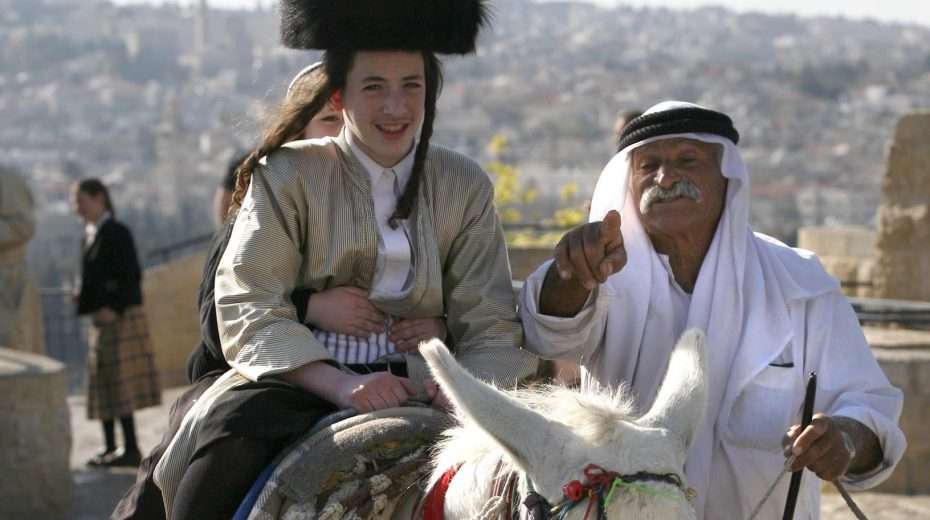A Closer Look at Jerusalem Today
 Ultra-Orthodox Jews enjoy a donkey ride from an Arab Muslim on Jerusalem's Mount of Olives
Ultra-Orthodox Jews enjoy a donkey ride from an Arab Muslim on Jerusalem's Mount of Olives
Jerusalemites make up 10% of the population of Israel.
Two out of every three Jerusalemites live in what is often referred to internationally as “Arab East Jerusalem.” Of these, 234,000 are Jews and 362,000 are Arabs.
The total population of 951,100 makes Israel’s capital the largest city in the country. It sits on 126 square kilometers. Jews comprise 62 percent of the city’s residents.
These numbers tell us a lot. They are from population data newly collected by the Jerusalem Center for Strategic Information on Israel’s Foreign and Security Policy.
West Jerusalem itself is home to only 355,000 of Jerusalem’s residents, perceived by the outside world as “Jewish Jerusalem.” In other words: Should Jerusalem actually be divided, as many foreign politicians suggest it should be, then the 234,000 Jerusalem Jews mentioned above would have to move to the western part of the city.
Jerusalem is fundamentally a religious city and thus a polar opposite of Tel Aviv. Only 19 percent of the city’s Jewish population are secular Jews; 25 percent identify themselves as traditional Jews; 21 percent are religious (Orthodox) Jews; and 35 percent are ultra-Orthodox Jews.
The Holy City of Jerusalem has always been the spiritual center of the Jewish people, even without a temple. The city on the mountains between the Jordan River and the Mediterranean seashore is the heart of the country, not only for Jews, but also for Christians and Muslims. This is clearly expressed in the results of this recent population survey.
However, this spirituality also makes Jerusalem one of the poorest cities in the country. Thirty-two percent of Jerusalem’s Jewish population lives below the poverty line, and as far as the Arab urban population is concerned, the figure is as high as 61 percent. The overall national average for those living below the poverty line is 16 percent for the Jewish population and 39 percent for the Arab population. In Jerusalem, people are poorer than in other places in the country. According to the media, this is due to the particular agenda of the people in Jerusalem: they seem to cultivate their religiosity first and foremost, and only afterward their standard of living. This also applies to some extent to the Arab city-dwellers.
Jerusalem has a very special attractive flair to the religious and even to some seculars. However, non-religious Jews sometimes become uncomfortable here and move away. Jerusalem belongs to the pious, whether Jewish, Christian or Muslim. This fact can also be observed in the Jerusalem school system, in which 300,000 students are registered. 113,000 students attend Orthodox yeshiva schools. These schools are not public schools. 120,000 are Arab students growing up basically as religious Muslims. The rest (67,000 students) go to state schools. These students range from traditional-to-religious.
The numbers present the religious nature of Jerusalem and therefore provide yet another indication of why the status quo in Jerusalem is so sensitive. Any small change in religious agreements between secular and religious Jews, as well as between Jews and Muslims, can provoke conflict in Jerusalem.
Many consider Jerusalem the Holy City, yet one should ask whether religious beliefs really make the city holier than other cities. Its people still sin. Just because some call it “holy” doesn’t make its residents holy. A city is truly holy only when God’s face shines upon it.
No comments:
Post a Comment